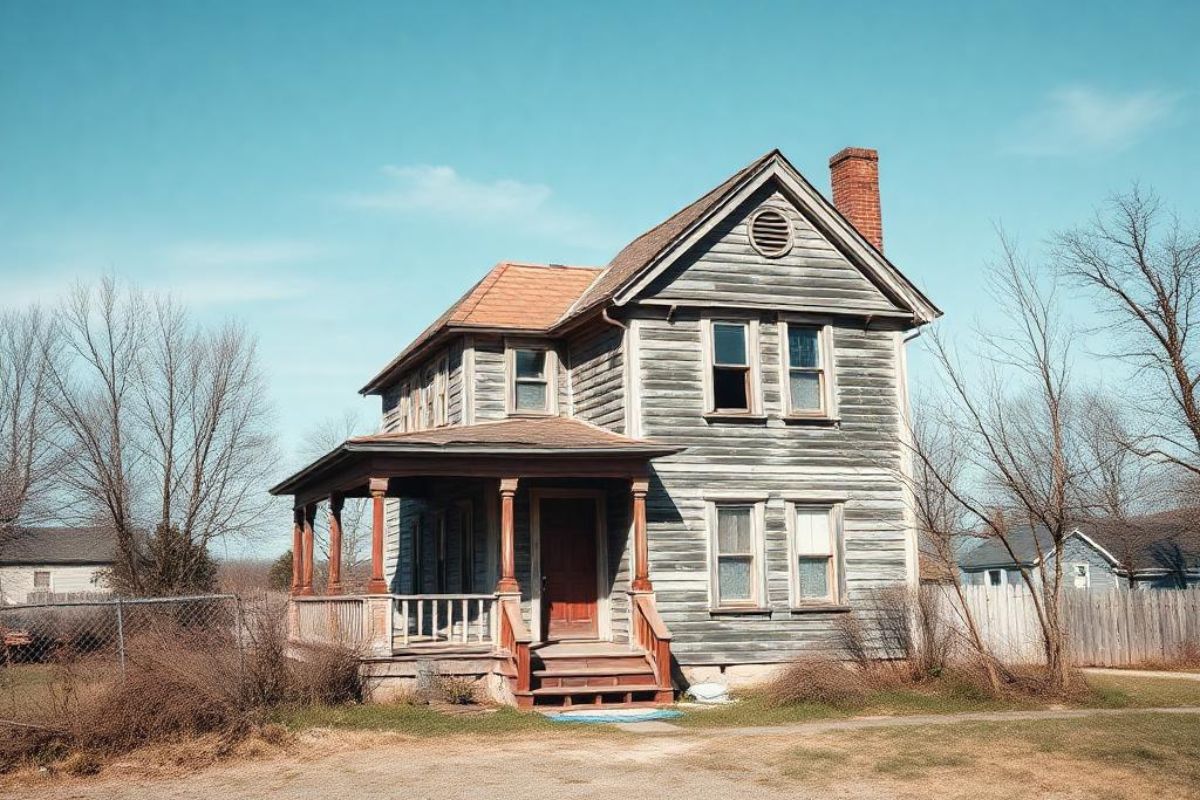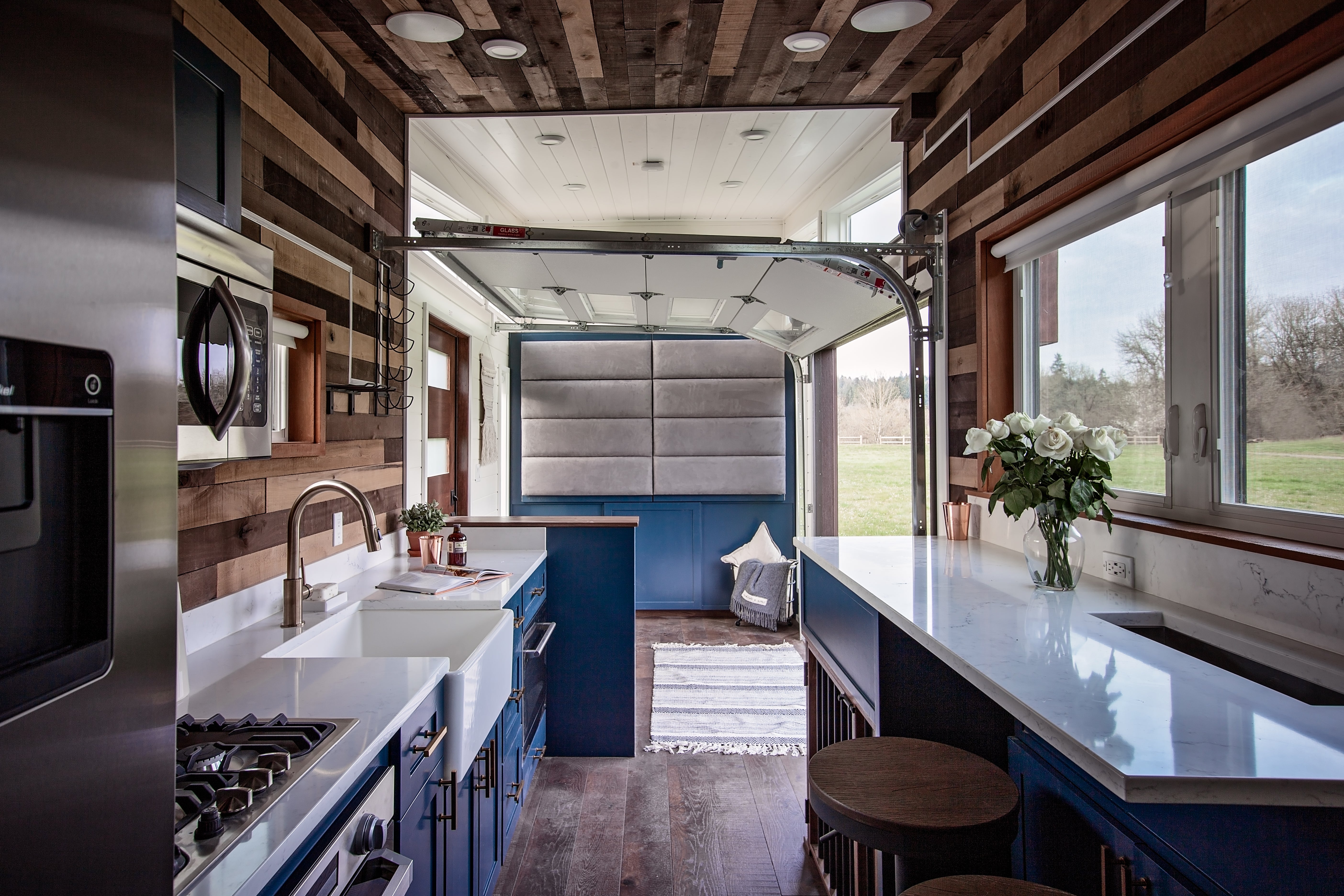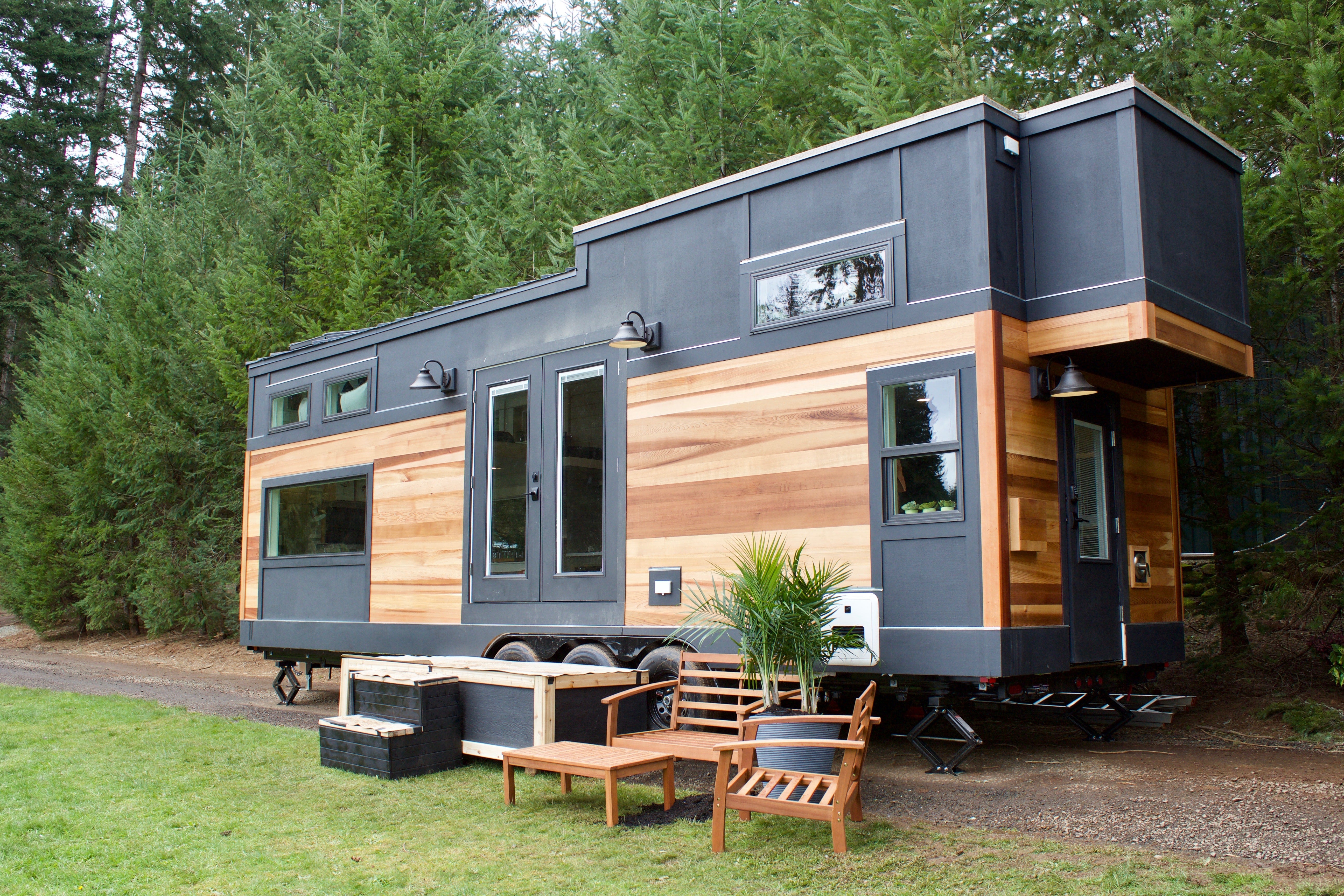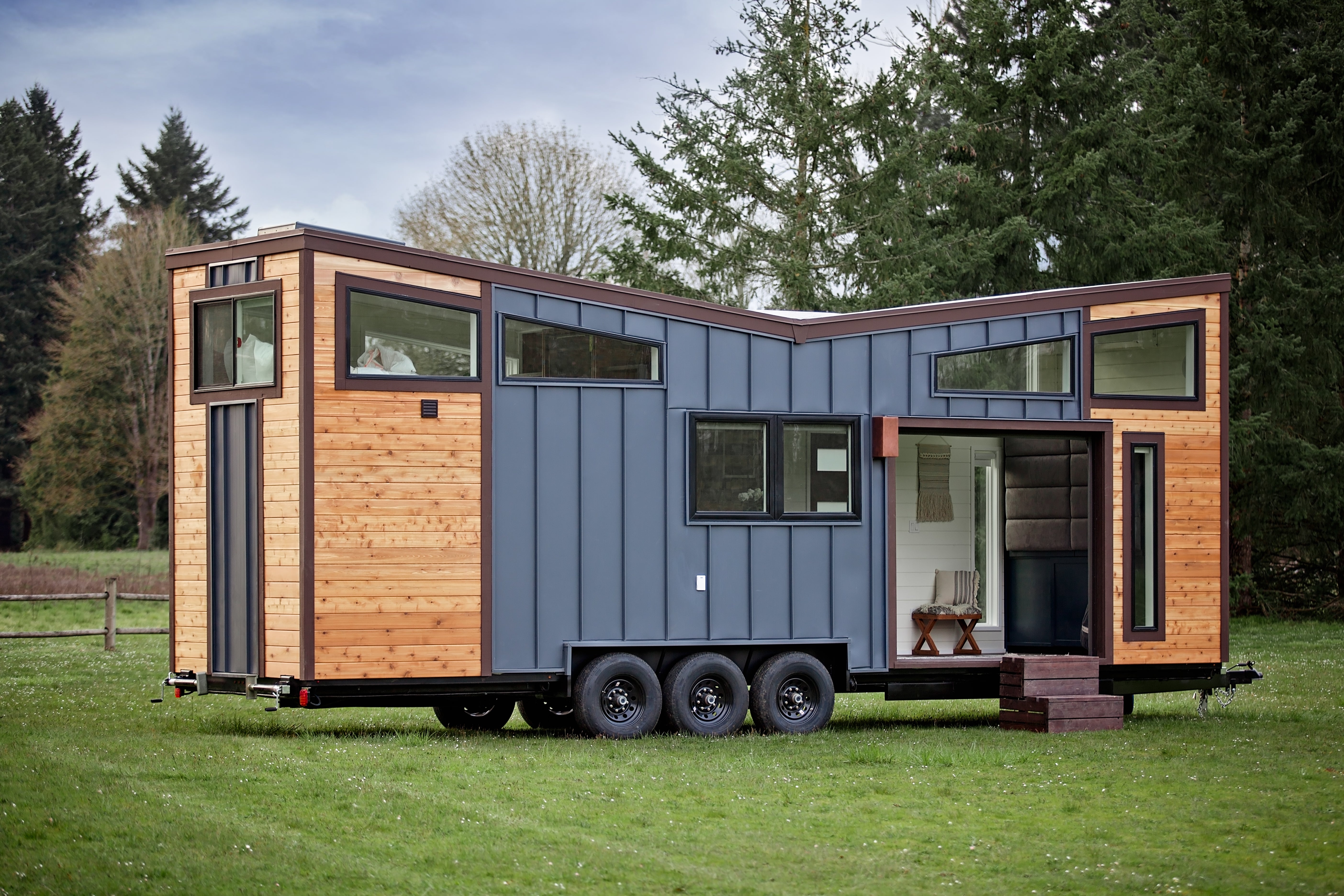In today’s housing market, the cost of home repairs has skyrocketed — and for many homeowners, it’s becoming an uphill battle. According to a 2023 study by HomeAdvisor, the average cost to renovate a home in poor condition now ranges from $30,000 to $70,000 or more. Add in contractor delays, hidden structural problems, and rising material costs, and what starts as a renovation dream can quickly turn into a financial nightmare.
That’s why more homeowners are skipping the stress and selling as-is — choosing instead to downsize to tiny homes that offer lower costs, simpler living, and long-term freedom.
A Smarter Exit: Sell As-Is and Start Fresh
For those living in older or damaged homes, the dream of restoring the property often turns into a financial and mental drain. Instead of sinking tens of thousands into uncertain repairs, a growing number of homeowners are choosing a different — and smarter — path: selling the home as-is and downsizing to a tiny house.
This shift has made selling a house in poor condition, especially in areas like Arkansas, where housing stock tends to be older and more repair-intensive — a practical, even empowering solution. Whether the home has structural issues, outdated systems, or cosmetic damage, many homeowners are realizing they don’t need to invest in full renovations to move forward. By selecting to sell as-is, they can avoid significant repair costs, save time, and transition into a more affordable and manageable lifestyle, particularly one rooted in the minimalist appeal of tiny home living.

The Hidden Burden of Fixing an Old House
Renovating an old home may seem noble, but it’s often a financial trap. The National Association of Home Builders estimates that about 35% of U.S. homes were built before 1970, making them prone to structural, plumbing, and electrical issues. Even small renovations often balloon into full-blown projects due to outdated systems and code violations.
Many homeowners begin with good intentions only to find themselves overwhelmed by:
-
Expensive and extended timelines
-
Permit delays and legal compliance issues
-
Contractors ghosting mid-project
-
Mold, asbestos, or foundational issues
-
Low return on investment
Instead of investing time and money into an uncertain outcome, many are choosing a simpler option: selling a house in poor condition. This approach allows homeowners to walk away from the stress of major repairs and use the proceeds to embrace a more minimalist and cost-effective lifestyle, such as moving into a tiny home. The growing demand for cash buyers across the U.S. means you don’t need to worry about staging, fixing, or even cleaning — homes can be sold as-is, quickly and efficiently.
Why Consider a Tiny Home Instead of Fixing the Old One?
Tiny homes offer an appealing contrast to the stress and cost of renovation. Averaging between 100–400 sq. ft., these homes strip away excess in exchange for simplicity, efficiency, and affordability.
Here's what makes them attractive:
-
Lower Monthly Costs: Utility bills, insurance, and maintenance are significantly reduced. The U.S. Energy Information Administration reports that the average monthly electric bill for tiny home dwellers is under $30, compared to over $120 for traditional homes.
-
Mortgage Freedom: Many tiny homes are purchased outright or with small loans, eliminating long-term debt.
-
Minimal Upkeep: No major roofing, plumbing, or HVAC replacements every decade.
-
Sustainability: Smaller carbon footprint and the ability to go off-grid.
Moreover, they represent freedom — from clutter, financial strain, and the stress of a sprawling property that requires constant upkeep.

Emotional and Practical Transitioning to Tiny Living
Letting go of a home, especially one filled with memories, isn’t always easy. The emotional aspect of downsizing is real. But what often surprises people is how liberating the transition becomes.
Begin by decluttering and focusing on what truly matters. You’ll find that many possessions are less valuable than you thought once you start living with intention.
When choosing a tiny home, consider:
-
Stationary vs. Mobile: Will you live in a fixed location or travel?
-
Local Laws: Check zoning laws in your city/state — some allow tiny homes as ADUs or primary residences, while others don’t.
-
Utility Options: Grid-tied or off-grid setups are both possible.
-
Design Priorities: Choose a floorplan that supports your lifestyle (e.g., workspace, pet-friendly, aging-in-place features).
Financial Benefits of Downsizing
The switch to a tiny home is not just a lifestyle choice — it’s often a smart financial one. Here's how:
-
Maintenance Costs: With a smaller space and modern systems, you spend significantly less on repairs.
-
Lower Taxes and Insurance: Tiny homes are often taxed at lower rates and require minimal insurance.
-
Less Debt: Many people pay off their tiny home within a few years, avoiding decades of mortgage payments.
-
Increased Flexibility: Lower cost of living allows for travel, savings, or early retirement.
In fact, a 2023 Zillow report noted that 63% of tiny home buyers are debt-free within five years — a far cry from the 30-year mortgage trap.

A Look at Arkansas
If you live in Arkansas, you're in a unique position. The state has relatively affordable land and growing interest in alternative housing. According to the Arkansas Realtors Association, the median home price in 2023 was $220,000, but older homes often require $20,000–$50,000 in repairs before resale.
Tiny homes are gaining traction here too. Communities in Bentonville and Fayetteville have begun exploring tiny house zoning, and land in rural areas is often ideal for setting up a minimalist, peaceful lifestyle.
Making the Move
Once you’ve sold your fixer-upper, whether it’s across the U.S. or in Arkansas, the path to tiny living begins. Consider financing options, local builders, and the community support around your new lifestyle.
Tiny home living isn’t just a downgrade in size — it’s often an upgrade in peace of mind, freedom, and purpose.
Conclusion
Fixing up an old, worn-out home may no longer be the smartest option. Rising labor and material costs, endless delays, and hidden issues make the renovation route financially and emotionally exhausting.
On the other hand, selling your home as-is lets you exit gracefully — without investing another dime into something that may never return the effort. It allows you to redirect your energy into a lifestyle built around freedom, affordability, and intention.
Companies like Paranova Property Buyers are making it easier than ever to offload distressed properties and transition to what’s next. Whether you’re looking to escape the stress of repairs or pursue a simpler life in a tiny home, this could be your moment to make a change that lasts.






Share: